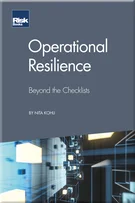Countervailing Power
Countervailing Power
Preface
An Introduction to Behavioural Risk Management
Risk Management Context
Value-at-Risk as the Dominant Risk Management Tool in the Financial Industry
Case Studies on Risk Management Failure
The Role of Regulation in Risk Management
Advances in Behavioural Economics and Finance
Behavioural Issues with Probability
Systems Theory
Using Scenarios
Making Robust Decisions
Advances in the Risk Management Process
Behavioural Risk Management in the Financial Markets
Countervailing Power
Behavioural Risk Management: Closing Thoughts
Appendix: Selective list of Behavioural Biases
Bibliography
Countervailing power has become a buzzword in the corporate governance debate. The case studies of Chapter 4 all included an element of insufficient countervailing power as a governance instrument to avoid risks. The case of Lehmans is a classic example, as the countervailing power existed on paper, but not in practice. Other examples include Enron, Worldcom, Ahold, ABN AMRO and Volkswagen. Why is countervailing power so important?
Many corporate governance codes have been issued to avoid excesses, such as Sarbanes–Oxley and the UK Corporate Governance Code. While many of these codes aim to protect shareholder rights, one of their common elements is to prevent excesses due to a concentration of power in one person (or a few) in the board. Ultimately, the risks of concentration of power could damage shareholder value. Institutionalising countervailing power can be used as an instrument to avoid any deliberate abuse of power. Some of the scandals mentioned above involved plain fraud by the company or a few individuals within the company. Whistleblowers were silenced by the top management of the company, which was possible because of the centralisation of power within the company
Copyright Infopro Digital Limited. All rights reserved.
As outlined in our terms and conditions, https://www.infopro-digital.com/terms-and-conditions/subscriptions/ (point 2.4), printing is limited to a single copy.
If you would like to purchase additional rights please email info@risk.net
Copyright Infopro Digital Limited. All rights reserved.
You may share this content using our article tools. As outlined in our terms and conditions, https://www.infopro-digital.com/terms-and-conditions/subscriptions/ (clause 2.4), an Authorised User may only make one copy of the materials for their own personal use. You must also comply with the restrictions in clause 2.5.
If you would like to purchase additional rights please email info@risk.net








